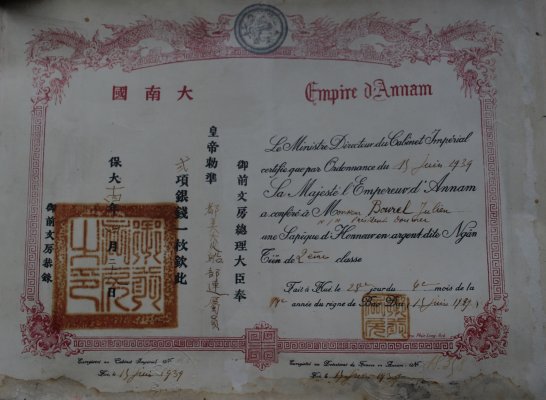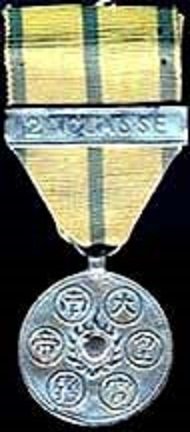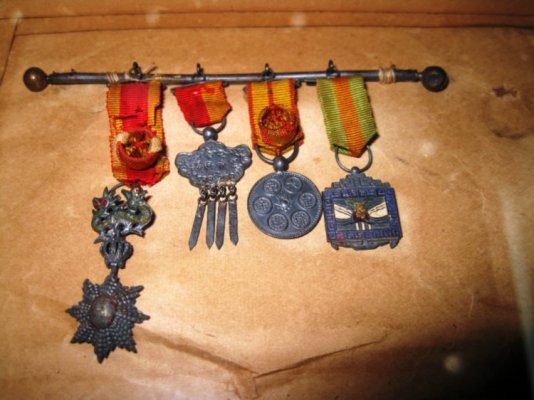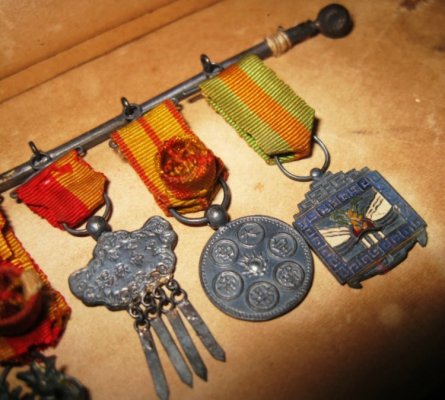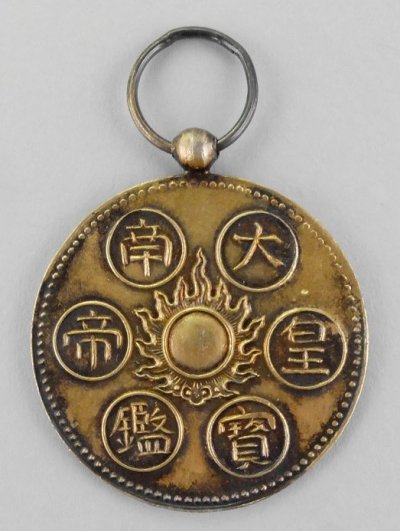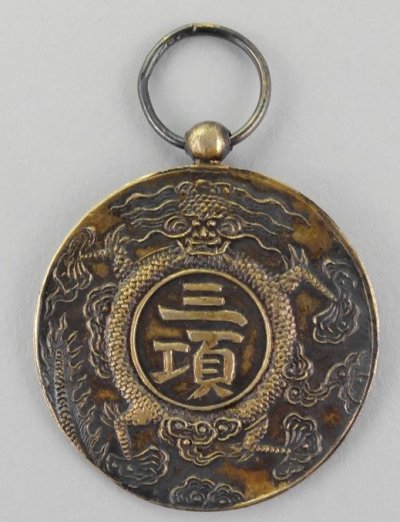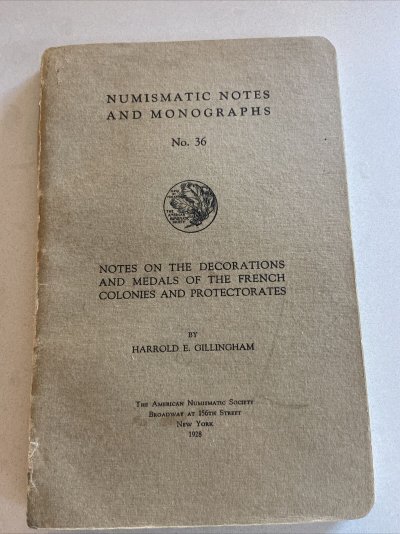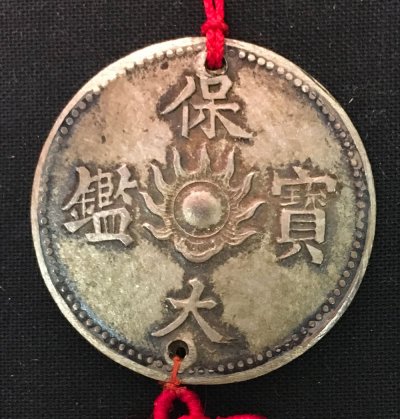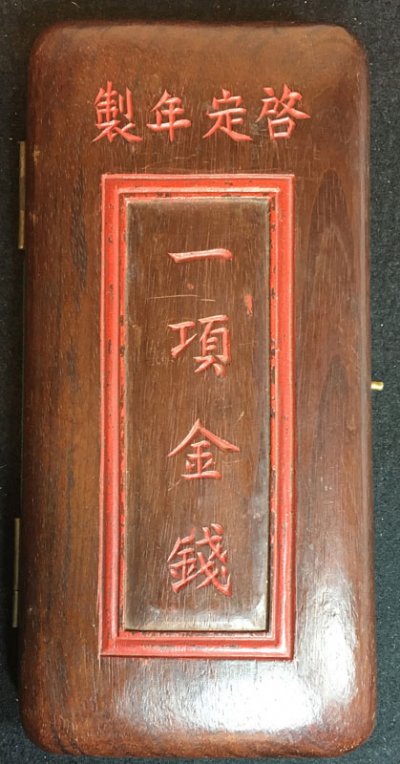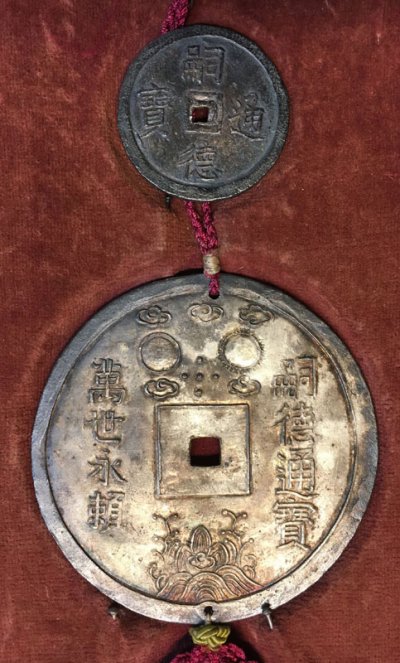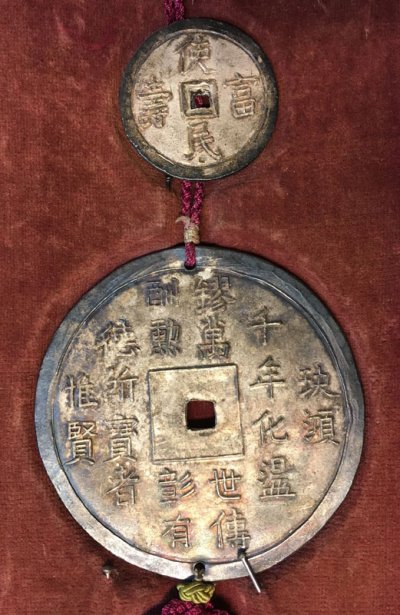Вы используете устаревший браузер. Этот и другие сайты могут отображаться в нём некорректно.
Вам необходимо обновить браузер или попробовать использовать другой.
Вам необходимо обновить браузер или попробовать использовать другой.
Аннам - Медали Ким Тиен и Нган Тиен/Kim-tiên и Ngǎn-tiên/ Décoration du sapèque d'honneur
- Автор темы loz-junior
- Дата начала
Дикие европеоиды довольно часто от шнурков избавлялись, припаивали ухо и обряжали монетку лентой, превращая её в медаль.
Образцы французской работы зачастую встречаются уже с родными "ушами".
В правление императора Нгуена Тхань-то (https://ru.wikipedia.org/wiki/Нгуен_Тхань-то) награда реформируется.
Французы наградную монету прозвали sapèque d'honneur (sapèque от малайского sa pek/sa pe, где sa = одна, а pek/pe/pie = монета). По монетам сапек https://ru.m.wikipedia.org/wiki/Сапек, а также Jean Lecompte (2000) Monnaies et Jetons des Colonies Françaises.
К 1939-му году "монета" существовала в трёх степенях
- золотая Kim Tien
- серебряная Ngan Tien
- серебряная Dong Tien
Если память мне не изменяет, то каждая степень, в свою очередь, существовала в трёх классах.
Образцы французской работы зачастую встречаются уже с родными "ушами".
В правление императора Нгуена Тхань-то (https://ru.wikipedia.org/wiki/Нгуен_Тхань-то) награда реформируется.
Французы наградную монету прозвали sapèque d'honneur (sapèque от малайского sa pek/sa pe, где sa = одна, а pek/pe/pie = монета). По монетам сапек https://ru.m.wikipedia.org/wiki/Сапек, а также Jean Lecompte (2000) Monnaies et Jetons des Colonies Françaises.
К 1939-му году "монета" существовала в трёх степенях
- золотая Kim Tien
- серебряная Ngan Tien
- серебряная Dong Tien
Если память мне не изменяет, то каждая степень, в свою очередь, существовала в трёх классах.
Милая группа миниатюр с нашей медалью.
Вложения
Последнее редактирование модератором:
loz-junior
Местный
Спасибо! Может когда-нибудь и сама медалька попадется..Это документ на так называемую специальную монетную награду - Tien.
А статут у таких наград был или давались за что угодно?
SAPÈQUE D'ONNEUR or KIM-TIÊN. Little is known of the origin of this decoration, although, like the Khánh, it has long existed. Whenever it was to be awarded it was made in gold by order of the monarch. In the thirteenth year of Minh-Mang (1832) one thousand Kim-Tiên were ordered to be made. It was awarded to Mandarins, to the military, and to foreigners for exceptional services, and to Princes and to Princesses on their becoming of age. There are four classes; all bear on one side the name of the reigning Emperor. The other side varies. The highest class has a rampant dragon with two native characters, Long-Văn ("ornament of dragons"), in the centre. The first class has only the figure of the dragon; the second class is the same, but smaller; while the lowest class is still smaller and bears no dragon, but the two characters, Nhi-Nghi (sun and moon). On February 8, 1894, the Sapèque in gold with a fringe and silk cord was conferred upon Madame Bert, the widow of Paul Bert, the former Resident-General of Annam and Tonkin.
Plate XXI

Plate XXI

SAPÈQUE IN SILVER or NGǍN-TIĚN. Like the Sapèque in gold, little is known as to its origin. In 1832, during the reign of Minh-Mang, twenty thousand were ordered to be made as a reward to the soldiers and others in inferior positions in the government. There are three classes, varying in size and decoration. All bear the name of the reigning emperor on one side. The reverse has a dragon for the first class; a smaller dragon for the second class, and native characters on that of the third class, which is pierced by a square hole at the centre. A larger and special model is sometimes given, bearing native char- acters on each side. Owing to the fact that a decoration of the period of 1832 was awarded in 1916 (and is in the writer's collection with the brevet), it would appear that all of the twenty thousand ordered in 1832 have not yet been awarded. Plate XX. The native characters in the first class medal shown in Plate XXI are MINH-MANG-THÔNG-BUU or "That which is recognized as precious in the reign of Minh-Mang."
Like the Sapèque in gold, this is suspended from the neck by a silk cord, with a fringe or tassel from the bottom of the decoration.
The Sapèque is sometimes awarded in bronze. Plates XXI and XXII.
Plate XXII
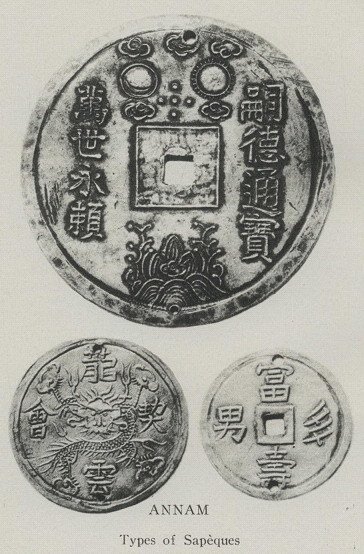
Like the Sapèque in gold, this is suspended from the neck by a silk cord, with a fringe or tassel from the bottom of the decoration.
The Sapèque is sometimes awarded in bronze. Plates XXI and XXII.
Plate XXII

13 декабря 1937 года.
Sapèque 2-го класса Дракона Аннама от императора Бао-дая

 ru.wikipedia.org
ru.wikipedia.org

Sapèque 2-го класса Дракона Аннама от императора Бао-дая

Бао-дай-де — Википедия

А это Ким Тиен 2-го класса из периода правления Нгуен Зык-тонг (1829 - 1883).

 ru.wikipedia.org
ru.wikipedia.org
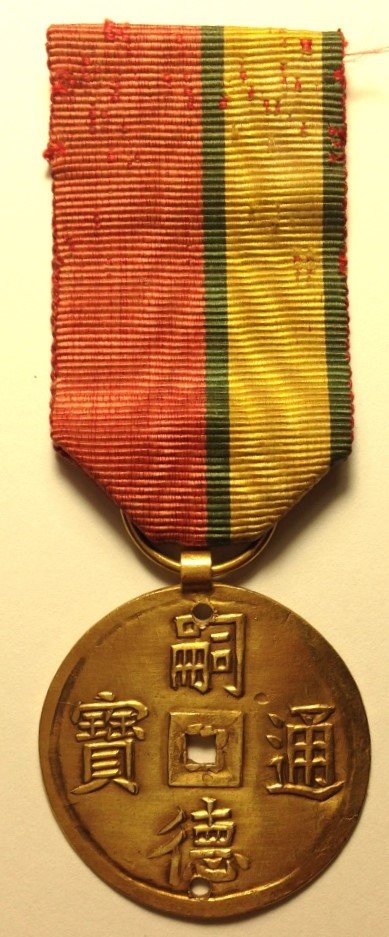

Нгуен Зык-тонг — Википедия


